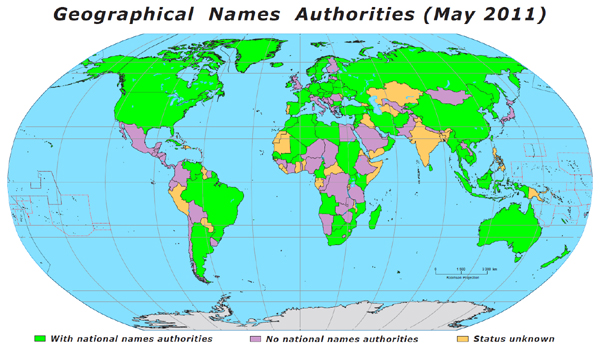|
S17: Legal status
of names
|
|
|
|
|
|
2. Naming competence
|
|
|
Names of administrative units are approved in most cases by the
central government or parliament; only rarely may the representatives
of the units themselves decide upon its names. Fairly common seems
to be also the practice of allowing local municipalities to approve
names to features within their area, such as streets, parks, municipal
buildings and sites.
But there is still a vast number
of features that appear on maps with names for which there are
no universal rules regarding who is entitled to approve them officially.
These include: populated places, natural features (lakes, rivers,
mountains, capes, islands, etc.), artificial features (roads,
bridges, junctions, buildings, railway station, etc.) and the
like.
Several ways of approving
of names:
- The most efficient way of dealing with geographical
names and granting them full official status is to set up a
geographical names authority with decision-making
power.
For examples click here 
- The examples mentioned in the previous bullet
illustrate cases where names authorities have full responsibility
over geographical names, as mandated by legal acts. It seems,
however, that a more common option in many countries is to have
an advisory names authority.
The process of granting names an official status might work
well also with this arrangement, provided that the decision
makers would listen to the advise given.
- In quite many countries the national
mapping authorities themselves are considered as names
authorities and, consequently, names published in official maps
are regarded as official.
- The least advantageous situation is the situation
in countries where there are no national
or regional names authorities. Name decisions in these
countries might depend on arbitrary motivations by individual
officials or politicians.

Click here
for enlargement.
|
  |
|
|
|
|
|
|
|
